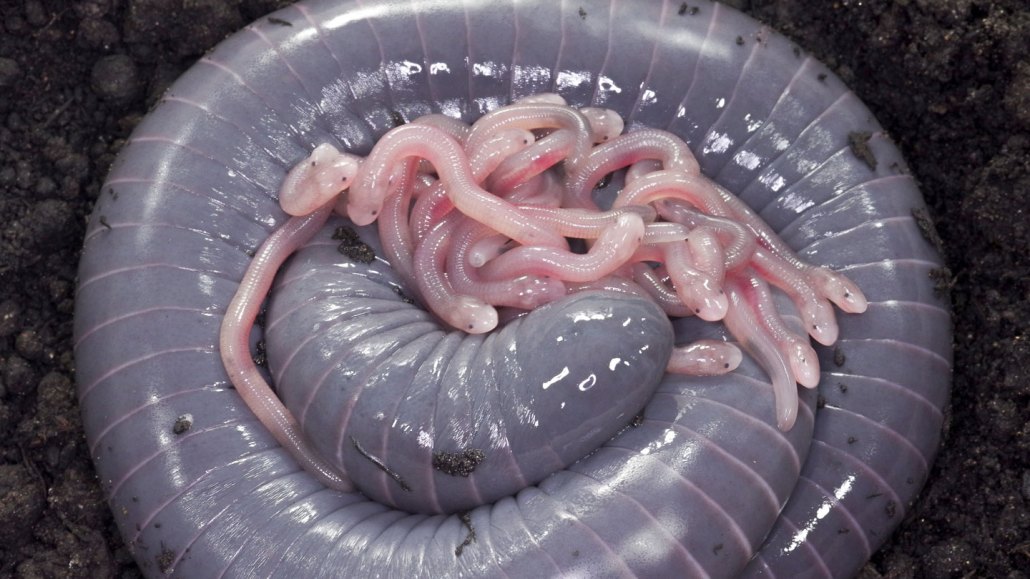This is the first egg-laying amphibian found to feed its babies ‘milk’
Like mammals, these ringed caecilians make a nutrient-rich fluid for their young

Ringed caecilian females (one shown, with smaller, pink young) feed their babies a fat-rich fluid similar to mammal milk that’s made in the reproductive tract.
Carlos Jared